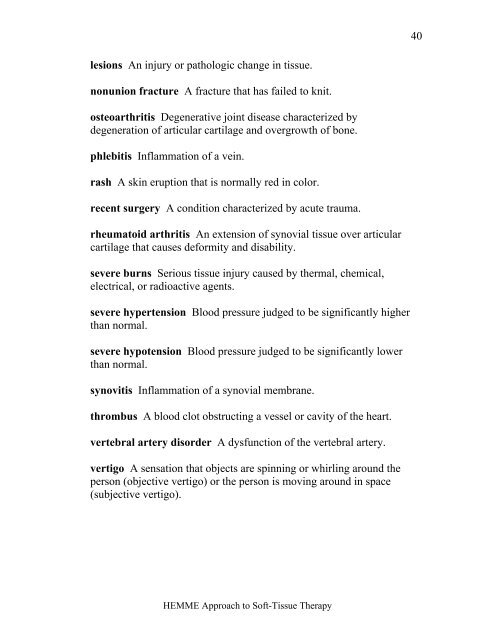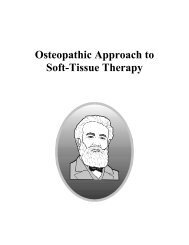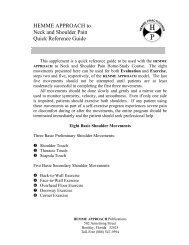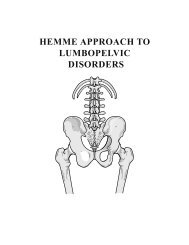HEMME APPROACH TO SOFT-TISSUE THERAPY
HEMME APPROACH TO SOFT-TISSUE THERAPY
HEMME APPROACH TO SOFT-TISSUE THERAPY
You also want an ePaper? Increase the reach of your titles
YUMPU automatically turns print PDFs into web optimized ePapers that Google loves.
40<br />
lesions An injury or pathologic change in tissue.<br />
nonunion fracture A fracture that has failed to knit.<br />
osteoarthritis Degenerative joint disease characterized by<br />
degeneration of articular cartilage and overgrowth of bone.<br />
phlebitis Inflammation of a vein.<br />
rash A skin eruption that is normally red in color.<br />
recent surgery A condition characterized by acute trauma.<br />
rheumatoid arthritis An extension of synovial tissue over articular<br />
cartilage that causes deformity and disability.<br />
severe burns Serious tissue injury caused by thermal, chemical,<br />
electrical, or radioactive agents.<br />
severe hypertension Blood pressure judged to be significantly higher<br />
than normal.<br />
severe hypotension Blood pressure judged to be significantly lower<br />
than normal.<br />
synovitis Inflammation of a synovial membrane.<br />
thrombus A blood clot obstructing a vessel or cavity of the heart.<br />
vertebral artery disorder A dysfunction of the vertebral artery.<br />
vertigo A sensation that objects are spinning or whirling around the<br />
person (objective vertigo) or the person is moving around in space<br />
(subjective vertigo).<br />
<strong>HEMME</strong> Approach to Soft-Tissue Therapy









